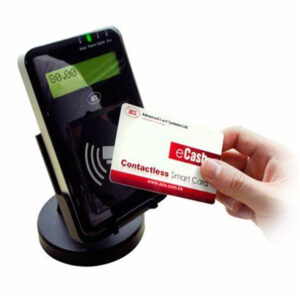Table of Contents
ToggleIntroduction
RFID (Radio Frequency Identification) technology has become a cornerstone for diverse industries due to its advanced capabilities in data transmission and recognition. This technology offers numerous advantages over traditional methods like barcodes. RFID card readers facilitate these benefits by enabling efficient and high-speed data processing. Below, we explore the various advantages of RFID card readers and their impact on different sectors.

Efficient and Fast Data Reading
One of the essential benefits of RFID card readers is their ability to read data without the need for a direct line of sight. They can scan through packaging, thereby increasing operational efficiency. Unlike traditional barcode systems, the effective recognition distance for RFID readers can extend beyond 30 meters. This broad range significantly enhances the convenience and speed with which data is captured, making it ideal for environments where quick processing is crucial.
Rapid and Bulk Recognition Capability
RFID card readers excel in speed and efficiency, particularly when it comes to identifying multiple items simultaneously. Once a terminal enters the RFID magnetic field, the reader instantly captures the information. This rapid recognition is further bolstered by the capability to process multiple terminals at the same time, thereby achieving batch recognition. Such efficiency greatly reduces the time and resources required for data collection and processing, streamlining operations in environments like warehouses, logistics, and retail.
Expansive Data Capacity
The data capacity of RFID technology is another area where it surpasses traditional barcoding. While two-dimensional barcodes can store up to 2,725 characters, the capacity diminishes when letters are included. In contrast, RFID systems offer expandable storage capability, potentially reaching tens of kilobytes based on user requirements. This vast data capacity enables the storage of extensive information related to the tagged items, facilitating better tracking, inventory management, and detailed data analysis.
Longevity and Versatile Application
RFID card readers and their corresponding tags are designed for durability and versatility. The radio communication method allows them to function in environments that are highly contaminated with dust, oil, or even radiation, without the need for direct human contact. Moreover, the robust packaging of RFID tags ensures a much longer lifespan compared to printed barcodes. This makes RFID an excellent choice for a variety of challenging applications, ranging from industrial to environmental settings.
Dynamic Data Modification
Another notable advantage of RFID technology is its ability to update tag data dynamically. Using specialized programming devices, users can write new data to RFID tags quickly and efficiently, a process that is faster than printing new barcodes. This interactive portable data file functionality allows for real-time updates and modifications, making it suitable for applications requiring frequent data changes, such as asset management and logistics.
Enhanced Security Measures
RFID card readers offer superior security compared to traditional data capture methods. The technology enables tags to be embedded or affixed to products of various shapes and types. Furthermore, access to read and write data on RFID tags can be protected by passwords, thus ensuring higher security for the stored information. This feature is particularly beneficial in sectors that handle sensitive data, such as pharmaceuticals, finance, and personal identification.
Real-Time Communication and Tracking
The capability for real-time communication is a significant benefit provided by RFID card readers. This technology facilitates continuous interaction between the reader and the tags at frequencies ranging from 50 to 100 times per second. Consequently, any object equipped with an RFID tag can be dynamically tracked and monitored as soon as it comes within the reader’s recognition range. This real-time tracking enhances operational visibility and improves inventory management, supply chain monitoring, and overall asset tracking.
Conclusion
RFID card reader technology stands out for its remarkable advantages over conventional data capture methods like barcodes. Its ability to read through packaging, support rapid and bulk recognition, offer expansive data capacity, function in harsh environments, enable dynamic data modification, and provide enhanced security make it an invaluable tool for modern industries. The real-time communication and tracking capabilities further underscore its importance in ensuring efficient and effective operations. As industries continue to embrace RFID technology, the benefits will become increasingly pronounced, leading to greater efficiency, security, and operational excellence.
